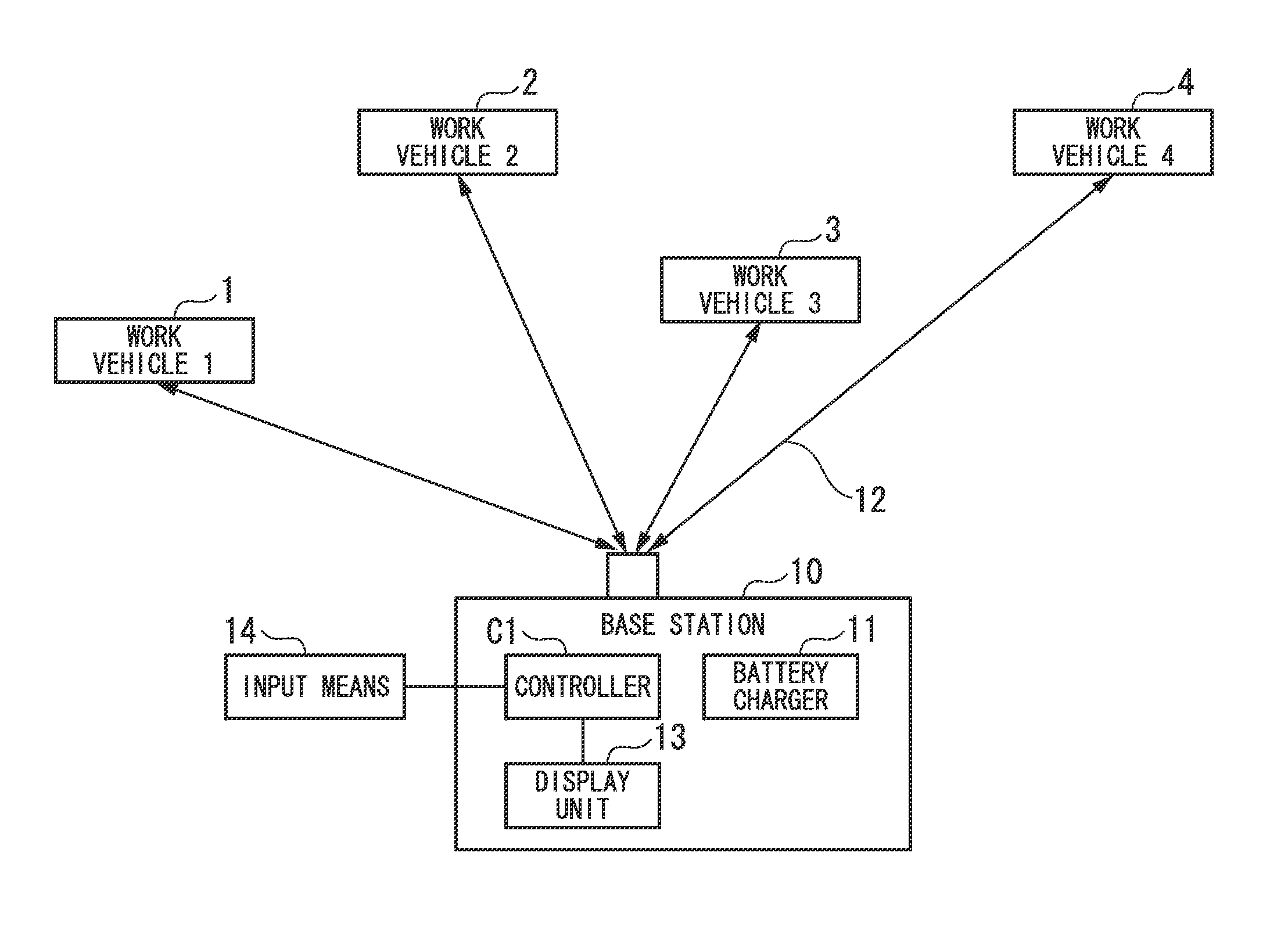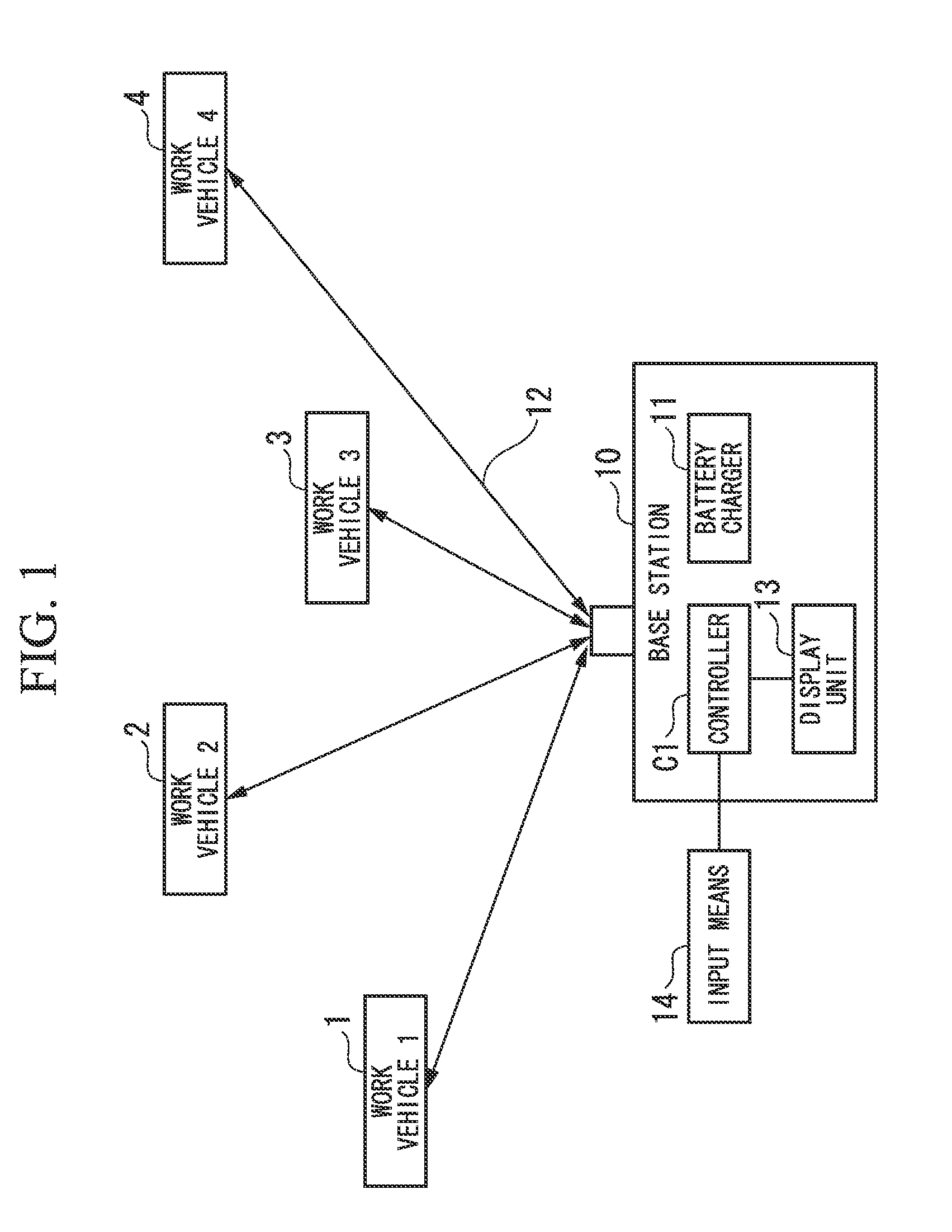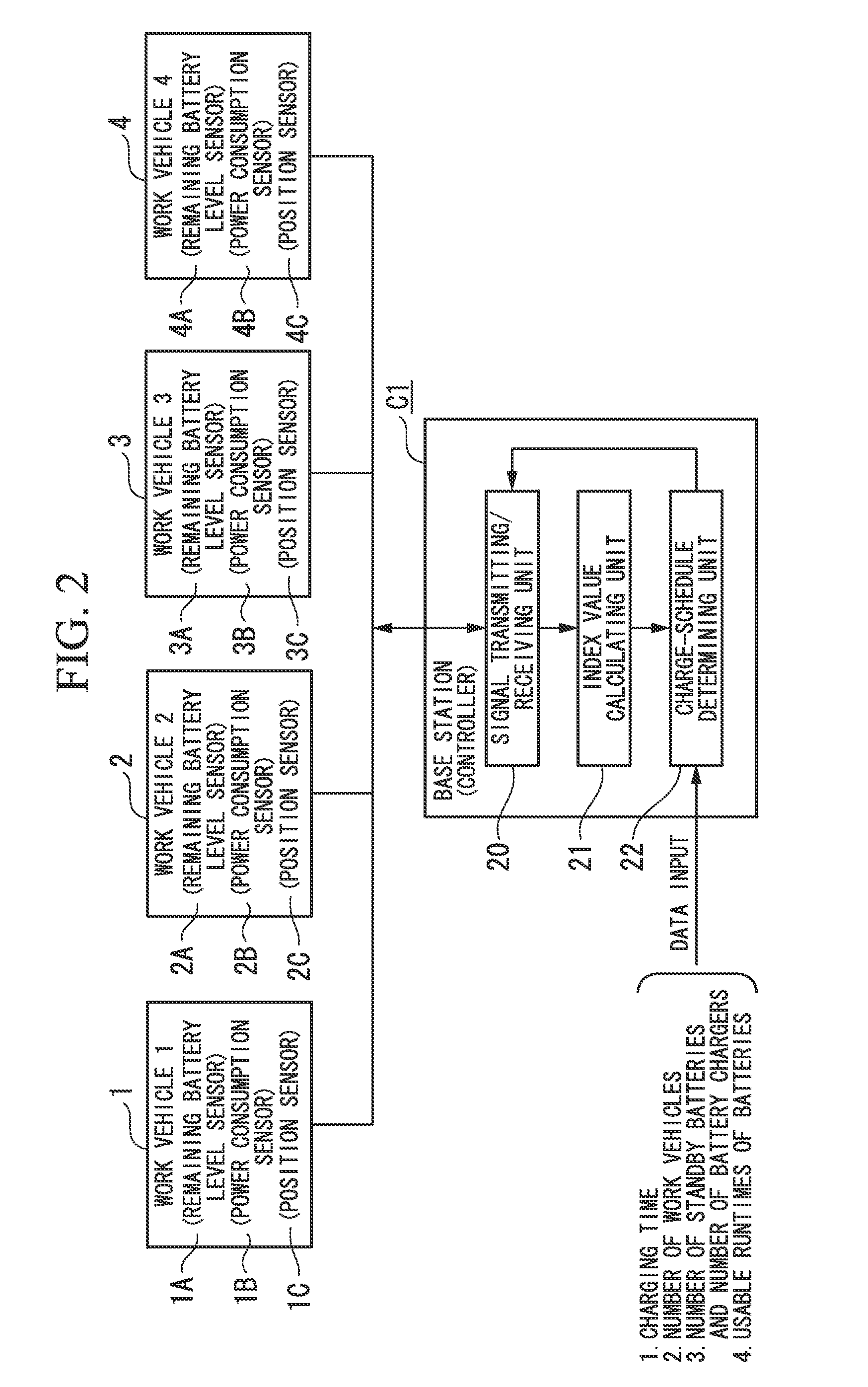Management method for charging secondary batteries of work vehicles, and system for charging secondary batteries of work vehicles
a technology for work vehicles and secondary batteries, which is applied in the direction of secondary cell servicing/maintenance, battery/fuel cell control arrangement, electric devices, etc., can solve the problems of noticeably affecting the service life of the battery pack, and achieve the promotion of efficient secondary battery management, more efficient schedule, and efficient management of secondary batteries
- Summary
- Abstract
- Description
- Claims
- Application Information
AI Technical Summary
Benefits of technology
Problems solved by technology
Method used
Image
Examples
embodiment 1
[0024]A management method for charging secondary batteries and a system for charging secondary batteries by using the management method for charging secondary batteries, which are shown as an embodiment 1 of the present invention, are explained with reference to FIGS. 1 to 4.
[0025]In the present embodiment, as shown in FIGS. 1 and 2, four forklifts which are electric work vehicles (which are shown as a work vehicle 1, a work vehicle 2, a work vehicle 3, and a work vehicle 4 in the drawings), five units of lithium ion batteries (batteries A to E) as secondary batteries which are rapidly chargeable, and one battery charger, are used.
[0026]Among the five units of lithium ion batteries, four units of them are installed individually in four forklifts in a state that the batteries have been completely charged, while one unit is used as a standby battery.
[0027]Further, the battery charger is able to rapidly charge the lithium ion batteries (batteries A to E). Generally, the battery charger...
embodiment 2
[0053]A management method for charging secondary batteries and a system for charging secondary batteries by using the management method for charging secondary batteries shown as an embodiment 2 of the present invention are explained with reference to FIGS. 5 to 8. The embodiment 2 is different from the embodiment 1 in that the order for replacing batteries is not determined based on a value detected by a sensor installed in each of the forklifts 1 to 4, and that batteries are replaced according to a predetermined schedule for replacing the batteries.
[0054]Further, a technical matter common to the embodiment 1 is that management of the plurality of forklifts 1 to 4, and the lithium ion batteries A to E are determined in advance based on the acceptable charge amount by which the lithium ion batteries A to E can be charged by the battery charger 11 (for example, the acceptable charge amount indicating that one lithium ion battery can be charged in one hour).
[0055]FIG. 5 is a general vi...
PUM
 Login to View More
Login to View More Abstract
Description
Claims
Application Information
 Login to View More
Login to View More - R&D
- Intellectual Property
- Life Sciences
- Materials
- Tech Scout
- Unparalleled Data Quality
- Higher Quality Content
- 60% Fewer Hallucinations
Browse by: Latest US Patents, China's latest patents, Technical Efficacy Thesaurus, Application Domain, Technology Topic, Popular Technical Reports.
© 2025 PatSnap. All rights reserved.Legal|Privacy policy|Modern Slavery Act Transparency Statement|Sitemap|About US| Contact US: help@patsnap.com



